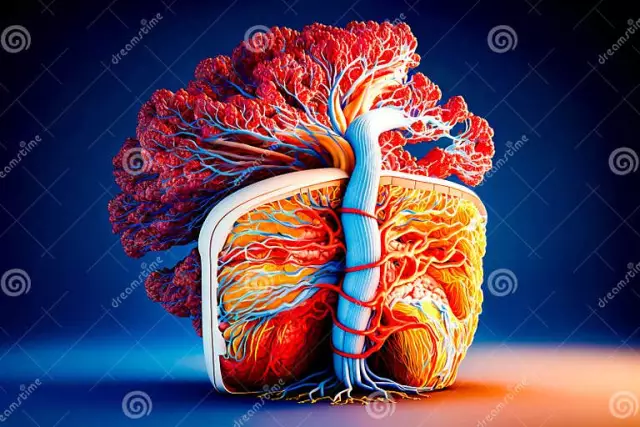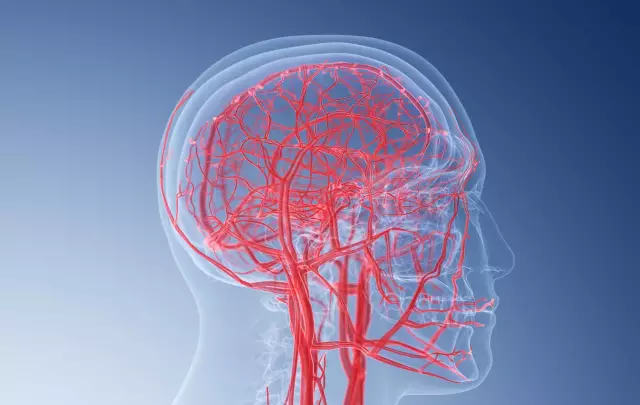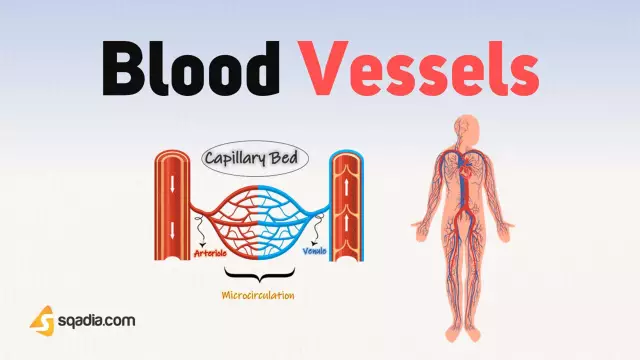- Author Rachel Wainwright [email protected].
- Public 2023-12-15 07:39.
- Last modified 2025-11-02 20:14.
Cardiography

The concept of "cardiography" combines different methods of studying cardiac activity. Electrocardiography has become widespread, with the help of which the electrical heart activity is recorded. Such cardiography of the vessels and the heart makes it possible to assess the blood supply to the myocardium, conductivity and heart rate, changes in the size of the cavities of the heart, thickening of the heart muscle, to identify electrolyte imbalance, the duration of a heart attack, and toxic damage to the myocardium.
The activity of the heart is recorded from the surface of the patient's body (electrodes are attached to the chest, legs and arms), the results of cardiography of the vessels and heart are recorded for 5-10 minutes. The result of such a diagnosis is a cardiogram of the heart, according to which the attending physician - therapist, cardiologist or other specialist can analyze the patient's condition.
When cardiography of blood vessels and heart is prescribed
Indications for cardiography are pain, discomfort in the heart, neck, back, abdomen, chest (as ischemia manifests itself in some cases), shortness of breath, frequent fainting, swelling of the legs, high blood pressure, heart murmurs, rheumatism, diabetes, stroke.
Patients are prescribed to make a cardiogram in preparation for surgery, during preventive annual examinations, pregnancy, when drawing up documentation before being assigned to health institutions and sports sections, etc.
In addition, people after 40 years of age are recommended to do a cardiogram of the heart annually, despite the absence of complaints. This is the only way to detect latent heart rhythm disturbances, ischemia, heart attack in time.
Decoding cardiogram

Only a specialist can make a cardiogram, decipher the data obtained and prescribe the appropriate treatment, if necessary. But the patients themselves can understand some of the terms that are important for decoding the cardiogram:
- heart rate (HR). The indicator displays the number of contractions of the heart muscle per minute. If there are more than 91 contractions per minute, this is tachycardia, if 59 beats or less, this is bradycardia. The normal heart rate for an adult is 60-90 beats.
- Electrical axis of the heart (EOS). This indicator, obtained using cardiography, helps to understand the location of the heart, to determine the functions of its various parts. In the cardiogram of the heart, the normal, horizontal, vertical and deviated left or right position of the EOS can be indicated.
- Sinus regular rhythm. This is the name of the normal heart rhythm, which sets the sinus node.
- Non-sinus rhythm. Such a formulation in the cardiogram of the heart indicates that the heart rhythm is set not by the sinus node, but by some secondary source of electrical cardiac potentials, which in turn indicates the pathology of the heart.
- Sinus arrhythmia (sinus irregular rhythm). This term means that the cardiography recorded an abnormal sinus rhythm with a gradual decrease and increase in the heart rate. Such arrhythmias can be non-respiratory and respiratory.
- Atrial fibrillation or atrial fibrillation. A similar conclusion of the cardiography of the vessels and the heart suggests that there is some disturbance in the rhythm of the heart, most often found in patients after 60 years, proceeding without obvious symptoms and often provoking heart failure, cerebral stroke.
- Paroxysm of atrial fibrillation. This is the name of a sudden attack of atrial fibrillation detected on cardiography. This condition requires immediate treatment and the sooner it is started, the more likely it is to restore the normal heart rhythm.
- Atrial flutter. A type of arrhythmia that is harder to treat than classic arrhythmia.
- Extrasystole or extrasystole. So in the cardiogram of the heart, an extraordinary contraction of the heart muscle is called, causing an abnormal impulse. Extrasystole can be ventricular, atrioventricular and atrial, depending on the area of the heart from which such an impulse originates.
- Wolff-Parkinson-White (WPW) syndrome. Congenital pathology, which is characterized by abnormal electrical impulses and dangerous attacks of arrhythmia.
- Sinoatrial blockade. A similar formulation in the decoding of the cardiogram indicates a violation of the impulse conduction to the atrial myocardium from the sinus node. This pathology is often found in cardiosclerosis, cardiopathy, myocarditis, heart attack, overdose of potassium preparations, beta-blockers, cardiac glycosides, after surgery on the heart.
- Atrioventricular block. This is the pathology of the passage of the impulse from the atria to the cardiac ventricles detected on cardiography. It provokes such a violation asynchronous contraction of the ventricles and atria of the heart.
- Complete, incomplete bundle branch block. Violation of impulse conduction in the thickness of the myocardium of the ventricles of the heart. This deviation is manifested in heart defects, cardiosclerosis, myocarditis, heart attack, myocardial hypertrophy, high blood pressure.
- Left / right ventricular hypertrophy. This is the name for an increase in the size of the ventricle or thickening of its wall.
- Scarring. Cardiography with such a conclusion suggests that in the past the patient had a heart attack. In this case, prophylactic treatment is prescribed to prevent relapse and eliminate the cause of the violation of blood supply.
- Prolonged QT interval. In the decoding of the cardiogram, this is an acquired or congenital violation of the conduction of the heart, which is accompanied by fainting, rhythm disturbances, and cardiac arrest.
During the examination, a cardiogram is often prescribed for children, but it should be borne in mind that the indicators of their cardiography differ from those of adults. For children under one year old, fluctuations in heart rate are typical, depending on their behavior. Their average frequency of contractions is 138 beats, EOS is vertical. Cardiography of children 1-6 years old displays the vertical, normal and sometimes horizontal position of the EOS, the frequency of contractions is 128 beats, sinus respiratory arrhythmia is often found. The cardiogram of the heart of children 7-15 liters indicates that the normal heart rate is 65-90 beats, the position of the EOS is vertical or normal, and respiratory arrhythmia is characteristic.
Found a mistake in the text? Select it and press Ctrl + Enter.






